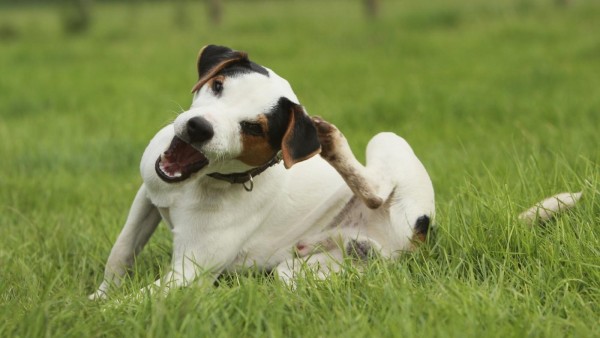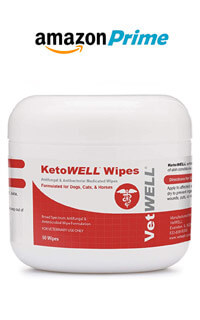
You may have noticed your dog scratching and licking at an ugly, red oozing spot on his skin. A hot spot. Hot spots are a type of skin infection caused by bacteria. The spots will be red, moist, and irritated that started with your dog’s picking at it, and made worse by bacteria.
The patch can get bigger in just a few hours and will be very painful for your pet. You’re likely to find them on your dog’s head, neck, hips and limbs. You might notice matted fur or hair loss around the area, along with scabbing and oozing. They’re more common in long-haired dogs in the summer, when the temperature and humidity get higher.

Symptoms of Hot Spots in Dogs
Watch out for these symptoms if you think your dog may be suffering from a hot spot:
– Itchy, painful patch of skin
– Continual chewing or licking at site
– Abnormal aggression (associated with painfulness of site)
– Possible depression (associated with painfulness of site)
– Inflammation, redness, and swelling in a localized patch of skin
– Crusted scabs or oozing sores
– Dry scaly skin
– Hair loss
– Moist, matted fur
– Foul odor from lesion
Causes of Hot Spots in Dogs
The hot spot is initially caused by your dog’s frequent fussing with the spot, perhaps due to one of the following reasons:
– Flea allergies
– Cuts or abrasions
– Ear infection/anal gland infection
– Foreign objects (splinters/thorns)
– Food allergies
– Matted fur Insect bites
– Chewing or licking due to stress or boredom
Bacteria grows with the help of heat and humidity, and gives your dog the inflamed, oozy spot.
Diagnosis of Hot Spots in Dogs
Hot spots are full of bacteria, painful and ugly. Cleaning it at home will help a bit, but proper treatment will require a trip to the vet.
Schedule an appointment as soon as possible (remember, these can get much bigger in just a few hours.) Your vet will conduct a physical exam to find out what caused your dog to start picking at the spot before the infection began. Let your vet know when you noticed symptoms, and anything unusual that might have led to the irritation so the vet can consider possible allergens or stressors.
To air it out and determine severity and size, your vet is likely to shave and clean the area. They may also take bacterial samples for diagnosis.
Treatment of Hot Spots in Dogs
Cleaning
Matted hair around the area will need to be shaved and the area cleaned. Remember, hot spots can cause your dog a lot of pain, and pain-related aggressiveness, so it’s best to allow a professional to do it. They can use a topical antiseptic to clean the spot, such as these popular VetWELL Chlorhexadine wipes on Amazon.
Treating Bacterial Infection
Topical or oral antibiotics will be prescribed to kill the bacteria in the wound, and may need to be taken for several weeks.
Treating Initial Irritation
Your vet will want to treat for whatever caused the initial irritation, be it allergies, fleas, anxiety, etc. They may suggest a change in diet, flea treatment, or exercise and play in the case of anxiety.
Medications for Pain and Inflammation
Antihistamines might be prescribed to reduce itchiness, and NSAIDS to reduce inflammation. Do not give your dog anything not approved by your vet.
Dietary supplements
Essential fatty acids may be suggested for pets prone to skin conditions.
Recovery of Hot Spots in Dogs
Depending on the severity, your vet may or may not want to see your dog for follow up appointments. Most hot spots clear up pretty quickly. A cone should be used to keep your dog from continuing to lick and chew the spot.
Regular grooming can prevent hot spots, but if your dog doesn’t get groomed regularly, clipping (or shaving, if appropriate for your dog’s coat) can also help prevent matting. Remember to keep your dog on a prescribed flea control program and maintain a stress free home.
You may not notice the spot healing for a week or two, but the medication is doing it’s job and fur should grow back in 3 – 4 weeks. In severe cases, scarring may be possible. Take your pet back to the vet if the hot spots continue.

